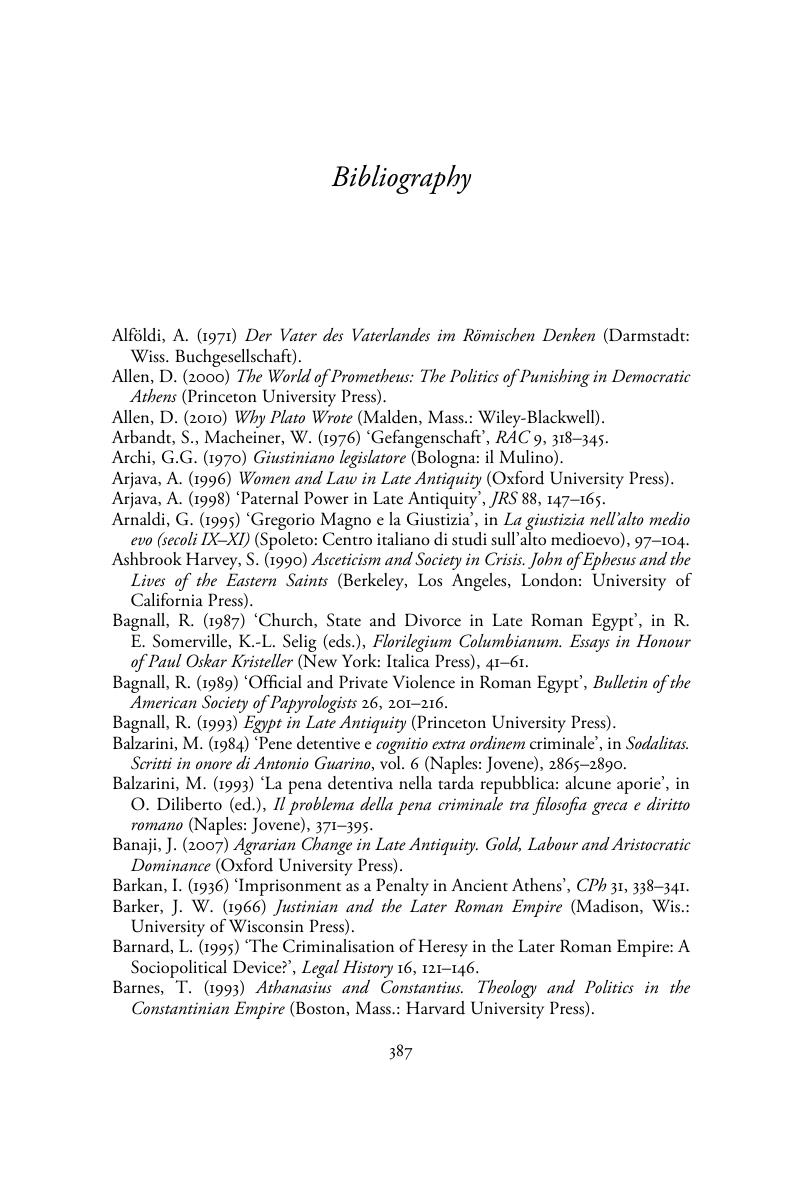Book contents
- Prison, Punishment and Penance in Late Antiquity
- Prison, Punishment and Penance in Late Antiquity
- Copyright page
- Dedication
- Contents
- Acknowledgements
- Abbreviations
- Maps
- Introduction
- Part I Punishment, reform and penance
- Part II Prison and punishment
- Part III Prison and penance
- Appendices
- Bibliography
- Index
- References
Bibliography
Published online by Cambridge University Press: 05 September 2015
- Prison, Punishment and Penance in Late Antiquity
- Prison, Punishment and Penance in Late Antiquity
- Copyright page
- Dedication
- Contents
- Acknowledgements
- Abbreviations
- Maps
- Introduction
- Part I Punishment, reform and penance
- Part II Prison and punishment
- Part III Prison and penance
- Appendices
- Bibliography
- Index
- References
Summary

- Type
- Chapter
- Information
- Prison, Punishment and Penance in Late Antiquity , pp. 387 - 414Publisher: Cambridge University PressPrint publication year: 2015



